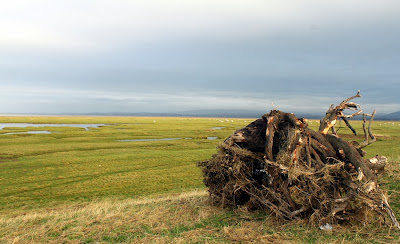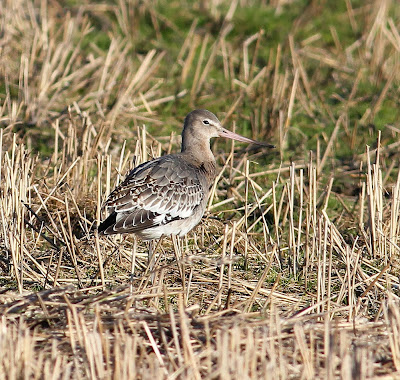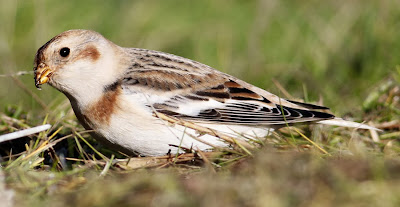I bypassed Pilling this morning and made my way north to a local lake. Not quite “The Lakes” with the daffodils made famous by William Wordsworth, more the erstwhile pool at Conder Green now transformed to a deep-water lagoon by recent storm driven high tides.
Piles of duck scattered across the water and some familiar waders in the roadside creek whereby my combined counts came to 190 Teal, 55 Wigeon, 7 Goldeneye, 7 Little Grebe, 3 Snipe, 2 Spotted Redshank, 8 Curlew, 4 Lapwing 1 Common Sandpiper, 1 Greenshank, 1 Cormorant, 1 Canada Goose and 1 Little Egret. That’s quite a list and the old pool doesn’t disappoint, the only bird missing today being the Kingfisher.
It’s a pretty awful picture of a Spotted Redshank, the Curlew slightly better.
Curlew
Spotted Redshank
I walked the old railway path to Glasson Dock and for my troubles found a few passerines, not the least of which was a single Fieldfare, a scarce beast of late. The Fieldfare was feeding in the hawthorns with a few Blackbirds, Chaffinches, Dunnocks, 2 Reed Bunting and 1 Pied Wagtail.
Dunnock
There was a female Sparrowhawk over the marsh carrying quite large prey that may have been a Snipe, the hawk eventually flying into some dense trees to finish the meal.
The rising sun made for hard work sorting the ducks against the bright light so I went around the other side of the yacht basin to examine the wildfowl on the expanse of calm water: 70 Tufted Duck, 45 Coot, 5 Goldeneye, 1 Pochard, 1 Little Grebe, 1 Grey Heron, 1 Cormorant, 1 Grey Wagtail.
Glasson Dock
Tufted Duck
Goldeneye
The view from the east made for a scenic photograph. It was so picturesque I sat down and rattled off a painting. If only!
Glasson Dock
Glasson Dock - Painting
Grey Heron
I stopped off at Pilling to see 200+ Curlews in fields near Lane Ends and just a few fields away, 450 Pink-footed Geese. I gave the geese a good grilling but couldn’t find anything out of the rather ordinary so headed off home, job done.
Pink-footed Geese
By the way, and for those readers who asked about the painted sheep in my last post. Local farmers mark their sheep with a series of colours so that they can later identify their own animals should the thousands of them become mixed up with an adjoining flock by wandering over field or marsh boundaries.
There’s been many a fall out over lost sheep, counts that don’t add up, and even accusations of rustling. Life’s never dull down Pilling Way.






















































.jpg)












